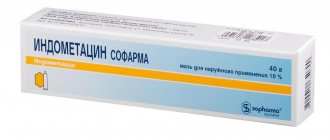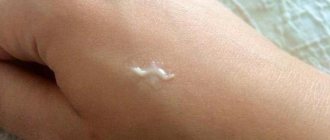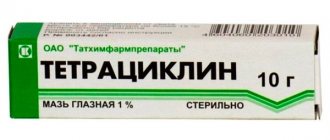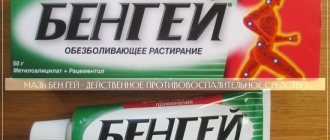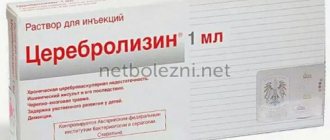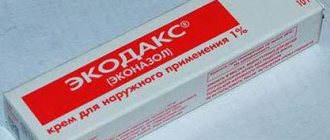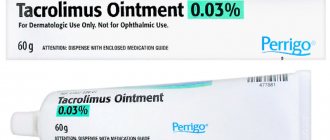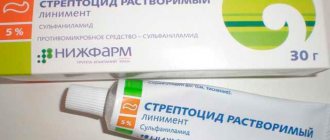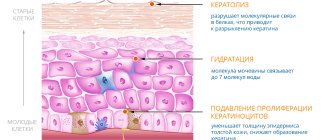The drug is used in the treatment of the runny nose, with its help it eliminates vasomotor rhinitis, is suitable for children and is prescribed during pregnancy. This is a homeopathic composition that helps well with external hemorrhoidal pathologies and allergic dermatitis. The product relieves the inflammatory process and can quickly heal the epithelium and mucous membranes. Like ichthyol ointment, it acts as an antiseptic. The medication cools the affected areas, has a drying effect, and relieves pain. Fleming's ointment for hemorrhoids relieves itching and stops bleeding.
Release form and composition of the drug
Fleming's ointment is produced by the St. Petersburg pharmaceutical company Homeopathic Pharmacy LLC. The ointment is white in color (a yellowish tint is allowed), has a fairly thick, homogeneous and viscous consistency without inclusions; when using the product, a slight menthol smell is felt. The drug is packaged in plastic jars with a capacity of 15 and 25 g.
The therapeutic properties of the ointment are provided by the following components:
| Item name | Characteristics of components |
| Main components | |
| Calendula | It has disinfecting, anti-inflammatory and antiviral effects. Additionally, the component accelerates the process of tissue regeneration and reduces pain. |
| Witch hazel | Helps moisturize the mucous membranes and epidermis, eliminates irritation, itching and prevents the growth of bacteria. Additionally, the element normalizes the condition of blood vessels and blood circulation. |
| Esculus | Reduces the production of exudate (fluid released during inflammation), also reduces inflammation and pain. Additionally normalizes the condition of blood vessels. |
| Menthol | It provides mild cooling, constricts blood vessels, which reduces nasal congestion, reduces pain, and also prevents the development of inflammation. |
| Zinc oxide | It has a disinfecting and anti-inflammatory effect, and also has a drying effect. |
| Auxiliary elements | |
| Petrolatum | Gives the ointment the required texture and facilitates application. Additionally, the component helps soften the epidermis and retains moisture in the skin, creating a protective film. |
The jar of ointment is placed in a cardboard package along with instructions. Additionally, brief information about the composition and use of the product is present on the packaging.
Description of the drug
Fleming's homeopathic ointment is a multidisciplinary anti-inflammatory drug with pronounced drying, wound healing and antiseptic properties. It is prescribed for various pathologies. Often we are talking about diseases of blood vessels, ENT organs and skin.
Features of the pharmaceutical product:
- When creating the drug, only natural ingredients are used;
- Liniment has a bactericidal and anesthetic effect;
- the components of the medication restore blood microcirculation and activate the regeneration of affected tissues;
- ointment eliminates pain and itching.
For effective treatment of hemorrhoids, it is necessary to consult a coloproctologist and carefully follow the instructions for use and prescribed dosages. Note that the remedy in question only eliminates painful symptoms in the anus.
Clinical and pharmacological group
Fleming's ointment is a representative of the pharmacological group of homeopathic drugs prescribed for local treatment of hemorrhoids in an uncomplicated form. According to patient reviews, the active substances of liniment quickly relieve inflammation, relieve pain and suppress the activity of potentially dangerous bacteria.
The use of the drug is indicated for general weakening of the protective functions of the immune system, external hemorrhoids.
pharmachologic effect
The medication in question belongs to the universal homeopathic remedies. It is used only externally, locally. The components of the drug activate the biochemical processes of tissue regeneration at the cellular level.
Mechanism of pharmacological action:
- active restoration of skin integrity;
- oxygen saturation of damaged tissue segments;
- strengthening the protective abilities of local immunity;
- increasing the intensity of blood flow, leveling the danger of the formation of stagnant processes in the veins.
When applied to the surface of a problem area of the skin, the ointment eliminates the burning effect, relieves inflammation, irritation and itching.
Many patients have a natural question: what does Fleming’s ointment help with? Doctors prescribe the drug in question to strengthen the walls of the anus, capillaries, rectum and restore the nasal mucosa.
The medication is used in the diagnosis of thrombosed, mixed and external hemorrhoids in uncomplicated forms.
Release form and composition
The medication is produced in the form of an ointment, packaged in tubes made of synthetic polymers and glass containers with a volume of 15 to 25 g. Liniment is intended only for external local treatment of problem areas of the body. We are talking about a white mass of medium thickness with a pronounced menthol aroma.
Composition of Fleming's ointment:
- cineol, menthol, alphapinene and zinc oxide - substances that provide a cooling, analgesic and bactericidal effect;
- calendula is an indispensable component, which is a plant base with a pronounced disinfectant, anti-inflammatory and antiseptic effect;
- witch hazel – a compound that activates the regeneration of wound surfaces; eliminates bleeding, stops inflammatory reactions at the cellular level;
- horse chestnut is a medicinal plant that restores hematopoiesis and has a drying and astringent effect.
Secondary components enhance the effect of the main ones. Since the ointment is well tolerated, it is often prescribed as a complex therapy for inflammation of hemorrhoids with other medications.
Storage conditions and periods
To ensure the desired therapeutic effect, it is important to ensure that the ointment is stored under the conditions recommended by the manufacturer. The main requirement is for the air temperature in the room, it should not exceed +25 degrees, with a relative air humidity of 70-75%. The drug should not be exposed to direct sunlight.
It is safest to keep the medication out of the reach of small children. The shelf life of the medicine is 24 months, provided the propylene packaging remains sealed.
Pharmacodynamics and pharmacokinetics
Fleming's ointment for the common cold, reviews of which describe not only its effectiveness, but also its versatility (due to its multicomponent composition), has the following properties:
- normalizes cellular respiration, as a result tissues can function normally;
- eliminates skin itching and tissue irritation;
- moisturizes mucous tissues;
- softens crusts in the nasal mucosa;
- normalizes blood circulation at the site of application;
- restores the strength and elasticity of the walls of blood vessels;
- activates cell regeneration processes;
- enhances the protective functions of the epidermis;
- prevents the development of venous stagnation;
- promotes vasoconstriction;
- eliminates swelling;
- reduces blood flow to damaged tissues, reducing redness;
- reduces secretion production;
- has a drying effect;
- restores the condition of mucous membranes;
- accelerates wound healing;
- prevents the development of inflammation;
- prevents infection from entering tissue or promotes its destruction (if infection already exists);
- attracts toxins and other harmful substances and accelerates their removal from affected tissues;
- reduce the time to stop bleeding;
- eliminates pain symptoms.
Fleming's ointment for a runny nose
The listed characteristics of the ointment help normalize nasal breathing, restore the sense of smell and protect the nasal mucous membranes from infection. The natural composition of the ointment does not cause addiction, that is, even with prolonged use of the product, its effectiveness does not decrease.
Important. The therapeutic effect from the use of the ointment occurs gradually, an improvement in well-being is noted after a day and intensifies within 10 days.
Mechanism of action on the body
With regular use, homeopathic ointment will improve the processes of cellular respiration, as well as microcirculation in tissues. It will speed up recovery processes, reduce venous congestion, and increase immunity. In addition, this homeopathic remedy is indispensable for allergies.
High effectiveness is also observed against hemorrhoids, both external and internal, with wet non-healing and thrombosed hemorrhoids. This drug has a beneficial effect on the rectal mucosa, on the condition of the capillaries and veins of the anus. Therefore, when used correctly, Fleming’s ointment will help the patient:
- Eliminate swelling;
- Narrow the vascular walls directly in the rectum;
- Overcome hemorrhoids;
- Restore the structure of the corresponding mucous membranes;
- Minimize the size of external hemorrhoids;
- Stimulate tissue nutrition directly in the anus;
- Reduce stagnation of venous blood;
- Improve blood flow;
- Relieve pain, itching, bleeding;
- Protect mucous membranes from subsequent damage.
Indications for use
Fleming's ointment has a wide spectrum of action.
The nasal remedy is used in the following cases:
| List of indications | Characteristics of the pathology | Features of the pathology |
| Vasomotor rhinitis | This is the body’s reaction to reflex stimuli (very cold or, conversely, hot air, strong aromas). | Pathology manifests itself as the development of inflammation, swelling of the nasal mucosa, or the appearance of copious discharge. Body temperature does not increase. |
| Acute viral rhinitis | Violation of the condition of nasal tissues is caused by the activity of viruses. | It is accompanied by copious “liquid” discharge from the nose, and inflammation and swelling also develop in the mucous tissues. Body temperature rises to approximately 37.5 or may be absent. |
| Acute bacterial rhinitis | The causative agents of the development of pathology in the nasal cavity are bacteria. | Nasal discharge often has a yellowish-green color and a thicker consistency (than with a viral runny nose). The inflammatory process and swelling are also very pronounced. Additionally, with bacterial rhinitis, the patient experiences an increase in body temperature to 38.5 degrees. |
| Rhinitis or itching in the nose of an allergic nature | Itching and disruption of the nasal tissues are caused by the action of allergens. | Manifested by profuse nasal discharge, sneezing and tissue swelling. In most cases, body temperature does not increase. |
| Rhinitis in pregnant women | The causative agent of the pathology is a hormonal change in the body of a pregnant woman. | Accompanied by increased irritation of the nasal mucous tissues, swelling and the presence of discharge (both scanty and abundant). Body temperature does not increase. |
| Drug-induced rhinitis | The pathology develops as a result of long-term use of vasoconstrictor nasal drops. | It manifests itself as a decrease in the sense of smell, the development of swelling of the mucous membranes and nasal congestion. There is also watery discharge from the nasal passages. An increase in body temperature is possible. |
| Atrophic rhinitis | This pathology is characterized by atrophy (reduction in size) of the mucous tissues of the nose and the nerve endings located in it. The reasons for the development of the disease are different: from unfavorable environmental conditions to long-term use of nasal medications. | It is accompanied by increased dryness of the nasal mucous tissues, the presence of thick and purulent discharge and the formation of rough crusts in the nose. In advanced form, nosebleeds develop. Body temperature can rise to high levels. |
| Nasal congestion without discharge | Nasal congestion can develop after a cold, severe bruising of nasal tissue and other pathologies. | It manifests itself as swelling of the nasal mucosa, lack of sense of smell, and possible development of tissue irritation in the nose in the form of itching and redness. The patient's temperature does not increase. |
| Dysfunction of the nasal mucosa | The reasons for the development of pathology are different: from a severe decrease in immunity to postoperative (subject to operations on nasal tissues) complications. | Manifested by disruption of the nasal mucosa. For example, lack or excess of secretion, lack of sense of smell, or increased susceptibility to any external irritating factors. The temperature in most cases does not rise. |
| Trauma to the nasal mucosa | Damage to the condition of nasal tissues is caused by trauma or surgical interventions. | In this case, the use of ointment is possible strictly as prescribed by the ENT specialist. The main symptoms are: the presence of pain in the nose, the development of swelling and irritation. The temperature can rise to 37.5 degrees. |
| Increased dryness of the nasal passages due to environmental exposure | The reason may be unfavorable climate or working conditions. | The pathology is manifested not only by dryness in the nose, but also by increased irritation and itching in the tissues of the nose. Body temperature does not increase. |
Fleming's ointment only eliminates the symptoms, but not the cause of the development of the pathology, so the product is often prescribed in combination with nasal medications. Also, it is impossible to completely treat the entire nasal mucosa with ointment, such as with a nasal spray.
Reviews from doctors
Numerous reviews confirm how popular this homeopathic remedy is. Moreover, comments about Fleming’s ointment can be found on thematic medical forums where the treatment of hemorrhoids is discussed.
In most cases, patients who use this homeopathic medicine on the recommendation of a doctor note the high effectiveness of the therapeutic approach. From the first days of use, itching is reduced and pain in the rectum is minimized. With prolonged use - more than a week, the nodules dissolve and cracks in the anal area heal. Often the drug helped people with bleeding in the anus.
The ointment has also proven itself to be effective for rhinitis. Doctors noted that after just two days, patients’ nasal congestion subsided. For sinusitis, the drug showed its effectiveness only on the tenth day. However, by this time, Fleming's Ointment had already eliminated all unwanted symptoms. In most cases, the homeopathic medicine was well tolerated and no side effects occurred.
Instructions for use, dosage
Fleming's ointment is considered a safe drug (confirmed by doctors and patient reviews). But to achieve the required therapeutic effect, as well as during lactation and pregnancy, it is recommended to use the product after consultation with a specialist.
The doctor selects the course and dosage, based on age parameters and the type of runny nose. The table below describes the rules for using the ointment, provided the patient has no restrictions.
| Type of pathology | Dosing Features | Duration and features of treatment | ||
| For children | For adults | Pregnancy/lactation | ||
| Vasomotor rhinitis | Apply the ointment to the nasal mucosa using cotton swabs 2-3 times per tap. | Treat the nasal cavity with ointment (using cotton swabs) 4-6 times a day. | The nasal mucosa must be treated with ointment (using cotton swabs) 2-3 times during the day. | 5-10 days. Other nasal medications may not be used. |
| Viral rhinitis | Apply the ointment to the nasal mucosa 2-4 times a day. | You can treat nasal tissues with cotton swabs 6 times per knock or use turuntulas 2 times during the day. | Apply Fleming's ointment 2-4 times a day using cotton swabs. | 7-10 days. The use of medications with antiviral activity is required. |
| Bacterial rhinitis | It is recommended to administer the ointment into the nasal cavity using a turuntula 2 times a day. | Turuntulas with ointment should be used 3 times throughout the day. | Treatment should be carried out with turuntula 2 times a day. | 10 days. Treatment is carried out using antibiotics. |
| Allergic rhinitis | It is necessary to treat the nasal mucosa with cotton swabs 2 times a day. | The product must be applied 3-6 times a day using cotton swabs. | The ointment must be used with cotton swabs 2-3 times per tap. | 10 days. The ointment is recommended to be used simultaneously with antihistamines. |
| Rhinitis in pregnant women | — | — | Apply the ointment 2-3 times during the day using cotton swabs | 5-7 days. No other medications are prescribed. |
| Drug-induced rhinitis | You need to treat the nasal mucosa 3 times a day using cotton swabs. | Apply the product with cotton swabs 3-4 times throughout the day. | It is recommended to treat the nasal cavity 2-3 times a day using cotton swabs. | 5-10 days. The ointment should be used without the addition of medications. |
| Atrophic rhinitis | It is recommended to administer the ointment into the nasal passage using a turuntula 1-2 times a day. | The product is used using turuntula 2-3 times a day. | The drug is administered into the nasal cavity using turuntula 2 times throughout the day. | 10 days. Complex treatment can be prescribed. Depends on the cause of the development of the pathology. |
| Nasal congestion without discharge | The nasal cavity should be treated 2-3 times at a time using cotton swabs. | The nasal mucosa can be treated with cotton swabs 4-6 times a day or turuntulas can be used 2-3 times. | Apply the ointment to the nasal mucosa using cotton swabs 2-3 times a day. | 5 days. The ointment is used without the addition of medications. |
| Dysfunction of the nasal mucosa | It is recommended to apply the product to the nasal mucosa 3 times during the day. | It is advisable to treat the nose with turuntula 2-3 times during the day. | The drug should be applied using cotton swabs 3 times during the day. | 5-10 days. Complex treatment can be prescribed. |
| Trauma to nasal tissue | The type of treatment of the nasal passages (cotton swabs or turuntulas), as well as the frequency of procedures, is selected individually. | The duration is selected individually | ||
| Increased dryness of the nasal mucosa | The ointment should be applied to the nasal mucosa using cotton swabs 2 times a day. | It is recommended to treat the nasal passage 3-4 times a day using cotton swabs. | It is recommended to apply the drug 2-3 times throughout the day. | 10 days. It is advisable to use the ointment in combination with nasal agents based on sea water. |
In order for Fleming's ointment to show the greatest therapeutic activity, the following rules should be followed when using it:
- Initially, you need to prepare sterile cotton wool, cotton swabs, saline solution or drops based on sea water.
- Wash your hands with soap or use a disinfectant (not alcohol-based).
- Clean the nasal passages with saline or seawater-based drops. Remove existing crusts and clots of secretion.
- Next, the ointment can be applied in two ways:
- Apply the ointment to a cotton swab and treat the nasal cavity with it. When processing, you should not push the cotton swab deeply, so as not to injure the nasal mucosa. Treat the second nostril in the same way (use a new cotton swab);
- make a turuntula (2 pieces) from sterile cotton wool and apply ointment to it. Insert the turuntula into each nasal passage for about 5-7 minutes.
- After using the ointment, it is not recommended to blow your nose for 30 minutes so that the product remains on the nasal mucous tissues for as long as possible.
- Wash your hands with soap after handling to avoid accidentally getting the product into your eyes.
Important. To treat the nose, you should use a new cotton swab or make a new turuntula each time. It should also be taken into account that the effectiveness of Fleming's ointment is higher if you start using it at the first sign of a runny nose.
Side effects
When using Fleming's ointment nasally, only the development of an allergic reaction is possible, which can manifest itself in the form of:
- itching, both in the nose and on the skin;
- rashes on the epidermis;
- development of suffocation;
- injury to the epidermis;
- burning sensations.
If these symptoms are present, it is necessary to clean the nasal mucosa with a clean cotton swab and take antihistamines. You also need to cancel the use of the product.
Advice. To exclude the presence of allergies, you need to apply the product to the back of the wrist (in a small amount) and check the skin after 1.5-2 hours. If there are no changes (rash, redness, itching), then the ointment can be used nasally.
Properties
A homeopathic remedy - Fleming's ointment, has antiseptic properties, accelerates the healing of damaged areas, it reduces inflammation, strengthens blood vessels, improves blood microcirculation in the affected areas.
The drug is used as an external remedy; for rhinitis, turundas soaked in ointment are inserted into the nose or the nasal passages are simply treated with the drug.
The drug is very effective in treating external manifestations of hemorrhoids. The medicine can quickly relieve hemorrhoids, fissures, and relieve swelling in the perianal area.
Fleming's ointment is used in the treatment of allergic dermatitis. It relieves inflammation, regenerates the skin and softens the skin.
Overdose
Fleming's ointment for the common cold (reviews do not contain information about an overdose of the drug) is a safe drug, but subject to the rules of use (externally or locally).
If the ointment was taken orally, then signs of poisoning are observed:
- vomit;
- diarrhea;
- headache;
- severe weakness;
- stomach ache.
An increase in temperature is possible. In case of poisoning, it is recommended to immediately rinse the stomach and take sorbents. Further, to stabilize the victim’s condition, symptomatic therapy is used.
Vishnevsky ointment
To provide an anti-inflammatory effect and prevent the addition of a bacterial infection, the ointment for a runny nose must have antiseptic properties. Such drugs often have a broad spectrum of action.
An excellent antiseptic, which is often used for a runny nose, is Vishnevsky ointment. The ingredients included in its composition contribute to rapid recovery. However, this ointment is contraindicated in patients suffering from kidney problems. It should not be used for children under 6 years of age. It is not recommended for pregnant women either.
Vishnevsky ointment can be used for no more than 1 week. In case of prolonged use, it can cause irritation and cause allergies.
special instructions
When eliminating a runny nose using Fleming's ointment, it is recommended to observe the following conditions:
- use the product only after cleaning the nasal passages;
- Until breathing is restored, it is recommended to avoid drinking alcohol, as well as spicy, salty and bitter foods. These products disrupt the water-salt balance and slow down the healing process;
- if there is slight bleeding in the nasal cavity, then before using the ointment, the wound should be treated with an antiseptic to prevent infection;
- if the runny nose is infectious in nature, then the ointment must be used in complex therapy, since the remedy only eliminates the symptoms, but not the cause of rhinitis;
- the product is not addictive, so it can be used for a long time;
- the ointment has a plant base, so the likelihood of developing an allergic reaction to the use of the product is considered high.
The ointment is not recommended for use in advanced forms of the runny nose, which is accompanied by very thick and purulent nasal discharge.
Drug interactions
Fleming's ointment for a runny nose (reviews characterize the drug as an effective remedy for rhinitis) is often used in combination with nasal medications. It should be borne in mind that the ointment contains petroleum jelly; it creates a thin film on the nasal mucosa that prevents the absorption of nasal medications.
As a result, medications should be used before applying the ointment to the nasal mucosa. There is no other information about the interaction of Fleming ointment with medications.
Ointment "Evamenol"
Complex medications have quite a powerful effect. Doctors often prefer them. Such ointments can have a beneficial effect on the body in many ways:
- antiseptic;
- vasoconstrictor;
- anti-inflammatory;
- emollient;
- antibacterial;
- regenerating.
Combination drugs can help in the treatment of both acute and chronic rhinitis. Among the many different medications, Evamenol, an ointment for the common cold, is in great demand. It has excellent analgesic properties, which is why it is often used in cases of damage to the nasal mucosa.
In addition, this ointment performs a number of functions beneficial to the body:
- facilitates nasal breathing;
- relieves the feeling of dryness;
- provides protection against any viral pathologies.
An effective remedy can be used even in cases of high blood pressure. But for children under two years of age, this medicine is strictly prohibited.
Analogs
If Fleming's ointment is not available for sale or if the product causes an allergic reaction, it can be replaced with the following drugs:
- ointment and cream Pinosol. The natural composition of the products provides disinfecting, anti-inflammatory and decongestant effects. Average price 300 rubles;
- Mentoclar gel. The product also has a natural base that provides anti-inflammatory, antispasmodic and disinfectant effects. Average cost 120 rubles;
- Viferon ointment. The basis of the product are interferons, which provide an immunomodulatory effect. average price 200 rubles;
- Oxolinic ointment. The active ingredient of the ointment (oxolin) has an antiviral effect. Average price 50 rub.
A doctor must replace Fleming's ointment, since the composition of the drugs is different, and, consequently, contraindications and side effects change, which should be taken into account when making a replacement.
Price
Fleming's ointment is a homeopathic remedy, so you can buy it not only in pharmacies, but also in specialized stores and online pharmacies. Depending on the region of purchase of the drug, the price for a package of the drug weighing 25 g can vary from 290 to 340 rubles. Data taken from monitoring prices in pharmacies across Russia.
Fleming's ointment is not a cheap drug. But if you consider that the product effectively fights any type of runny nose and one jar with a capacity of 25 g is enough for 2 years, then the purchase of the ointment is “justified”.
Additionally, it should be taken into account that the remedy can be used not only for a runny nose, but also in the treatment of skin pathologies and hemorrhoids. For these diseases, the ointment has also proven itself positively (the data is confirmed by numerous reviews).
Author: Kotlyachkova Svetlana
At what age can you use it?
The instructions for using Fleming's ointment note that due to the natural origin of the drug, the product can be used by people of almost any age; it can be used during pregnancy and breastfeeding.
Important! Only small children (under 2 years) should not be treated with ointment. The use of the drug for children older than this age requires prior consultation with a pediatrician.
There are no contraindications to the use of the medicine in elderly patients. This is especially important because as you age, your skin becomes more prone to dryness and cracking, and your likelihood of developing hemorrhoids, nasal congestion, and other problems increases.
